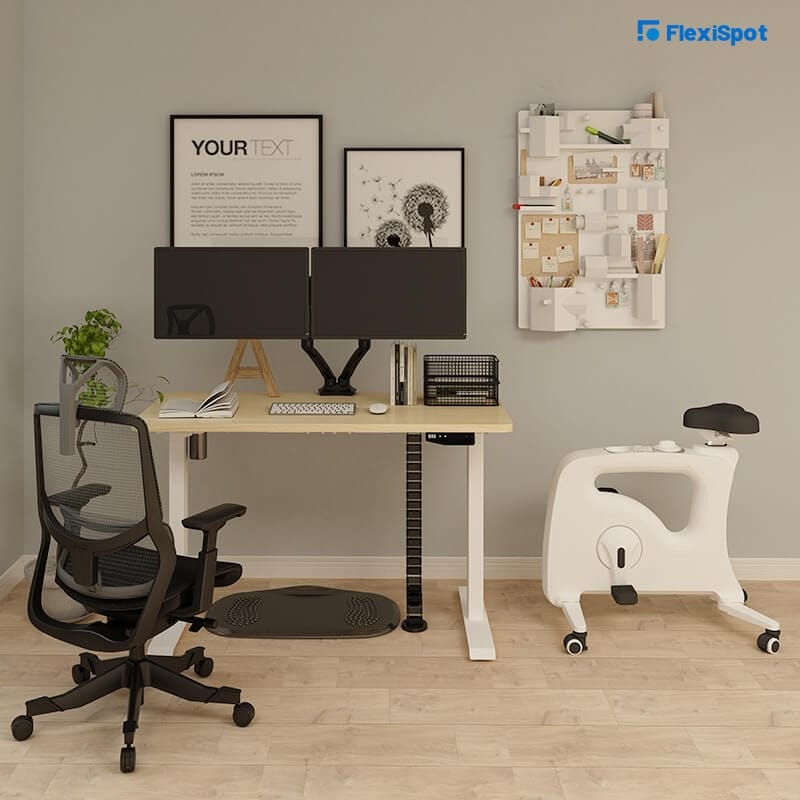Working from home has become a way of life for many of us. If you haven't personally experienced the phenomena, you've undoubtedly heard about it since media attention of working from home has increased by 12,000 percent in the United States since January 1st.
However, working from home is definitely not a new trend. In 2014, research was released on the advantages of working from home by a Chinese travel business called Ctrip's WFH policy (Bloom et al. 2014). Since the coronavirus epidemic has caused millions of employees to establish home offices, there have been studies on hundreds of companies and surveys on working from home over the last several months.
So, let's see what the research has to say.
Several common patterns have emerged in recent research, each of which raises policy issues for corporations or government authorities. But one thing is certain: working from home will remain a significant element of the post-COVID economy. As a result, the sooner governments and business leaders consider the consequences of a remote workforce, the better positioned our businesses and communities will be after the epidemic has passed.
The US economy has evolved into a work-at-home economy.
We discovered that 42% of the US labor force now works full-time from home, whereas another 33 percent is unemployed, demonstrating the devastating effect of the current recession. The remaining 26% work on the grounds of their company, mostly as necessary service employees. Employees who work from a home account for almost twice as many as those who work in an office.
We can see that at-home employees now represent more than two-thirds of business growth if we weigh their wages in 2019 as a measure of their contributions to the country's GDP. We've gone from a traditional economy to a working-from-home but functioning economy in a matter of weeks.
Despite the fact that the epidemic has pummeled the economy to the point that we won't see a restoration of how matters used to be until 2022, things would have been substantially worse if workers were unable to work from home. In our struggle against COVID-19, remote working has helped us to preserve social distance. As a result, working from home is not only economically necessary, but it is also a critical weapon in the fight against the pandemic.
WFH Encounters That Were Better Than Anticipated
The epidemic spurred a hasty and expensive trial in WFH, prompting decision-makers to reorganize working arrangements.
Previous opposition to WFH, such as concerns about decreased productivity, the costs of experimentation, and coordination issues within networks, was brushed aside by the urgent need to safeguard workers and society as a whole.
Working from home has proven to be a beneficial experience for the vast majority of workers.
Respondents to the National Bureau of Economic Research's Survey of Working Arrangements and Attitudes (SWAA) reported better-than-expected WFH experiences and increased productivity.
When compared to their pre-COVID-19 expectations for home-working productivity, 20.6 percent of those questioned said it was much better, 21.9 percent said it was better, and 17 percent said it was better. Only 13.9 percent of respondents claimed it was worse, while 26.7 percent said it was around the same.
On average, respondents had better-than-expected experiences working from home, implying exaggerated pre-pandemic skepticism about WFH.
New Human Capital and Physical Investments to Support WFH
According to SWAA statistics, the typical US employee has spent 15 hours of work and $561 on home equipment to support WFH, equating to 0.7 percent of yearly GDP.
COVID-19 also led to the fast improvement of back-end technologies and equipment that enable WFH by businesses and other organizations.
As a consequence of these expenditures, both businesses and workers are now in a far better position to successfully remote work.
The Stigma Connected with WHF Has Been Much Reduced
Prior to COVID-19, working from home was typically connected with avoidance, with one pre-pandemic research predicting that production was 12 percent lower among those chosen for WFH.
After the onset of the pandemic, however, the SWAA survey found better opinions of home-working among some, most, or all "people you know."
Only 28.3 percent said their impression had not changed, and only 6.6 percent said it had deteriorated.
Persistent Apprehensions About Crowds and The Possibility of Disease
Only 28% of participants said they planned to go back to pre-pandemic activities if a COVID-19 vaccine became widely available, according to the poll.
The others said that they would be careful about pursuits such as indoor eating, subway commute, and ride-sharing.
According to research, workers desire to work from home on a certain number of days each week.
The NBER predicts that persistent worries about being in close proximity to other individuals would increase demand for the ability to WFH.
A Boom in Technical Developments That Enable WFH as A Result of the Pandemic
According to the research, from January to September 2020, US patent applications promoting WFH technology more than quadrupled, exceeding the previous high point.
According to the NBER, such developments are projected to promote a broader shift toward WFH even after the epidemic is over.
COVID-19 also spurred innovation among regulators, resulting in an increase in virtual interactions for social and health professionals.
WFH might become more practicable for healthcare workers if regulations stay favorable of online services, according to the paper.
Increasing Productivity When Working from Home
Working from home is a significant departure from working inside an office setting. Where could you be productive at home? How do you maintain your concentration? When should you begin and end? What impact will this have on your home life?
Here are some pointers to assist you or your staff be more productive at home:
Make Your Workstation as Productive as Possible
Working at an office encourages you to stay focused and on task. Whether it's converting an additional room into an office or placing a desk behind your sofa, try to reproduce this working area in your house. The area should be pleasant, free of other displays (TV, Xbox, etc.), and equipped with everything you'll need to do your task.
When creating your workstation at home, it is crucial to create a proper and separate working space where you can focus. Since we become idlers because we are just at home, it is also essential to combat the sedentary lifestyle. One great solution to tackle both is to get an adjustable standing desk.
The Vici Standing Desk is designed to enhance how you work at home by allowing you to burn calories while staying productive. Standing for a few minutes per hour can decrease back, shoulder, and neck pain too. You will be able to stay productive and healthy with this one simple solution.
Maintain Organization
To keep on track, you may need to start utilizing a new organizational system or begin using a day planner. It's a good idea to make a weekly work plan with a list of activities to fulfill. Sticking to the timetable can help you establish consistency and establish a routine.
Commit to Shorter but More Intensive Work Periods
When you concentrate intensively for shorter periods of time, you might be more productive—Time yourself for some hours to see how much you can work without being distracted. If you can work for half an hour without being sidetracked, for example, keep working at this speed throughout the day. Set an online timer after each break and work for the following 30 minutes without interruption.
Pause for A Moment
Your brain can concentrate and relax by taking frequent rests. According to the Airtasker report, taking frequent breaks is the greatest method to remain productive for remote employees. Get food, drink some water, get some fresh air, or spend a little time with family during your break. A remote worker's average break time is 22 minutes spaced out throughout the day.
Make an Appointment for Virtual Socialization
According to the New York Times, the lack of social connection and loneliness are the most challenging aspects of working from home. Using your typical travel opportunity to check in with coworkers might help you maintain social engagement while also focusing your mind on the tasks at hand.
In Conclusion
Working from home can really cut down on costs for employees and employers. Just make sure that you set up a good workstation at home, which allows you to stay productive and not spend too much time procrastinating.





